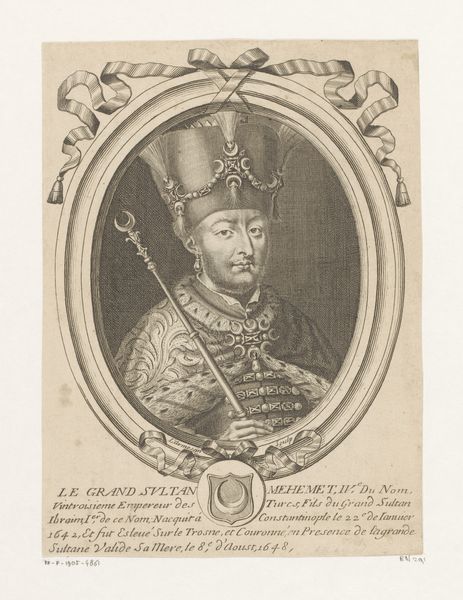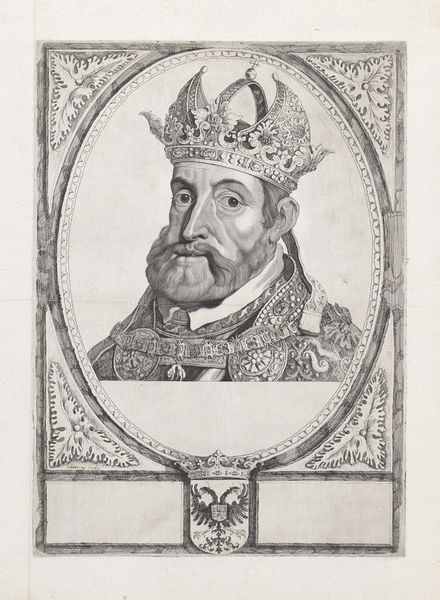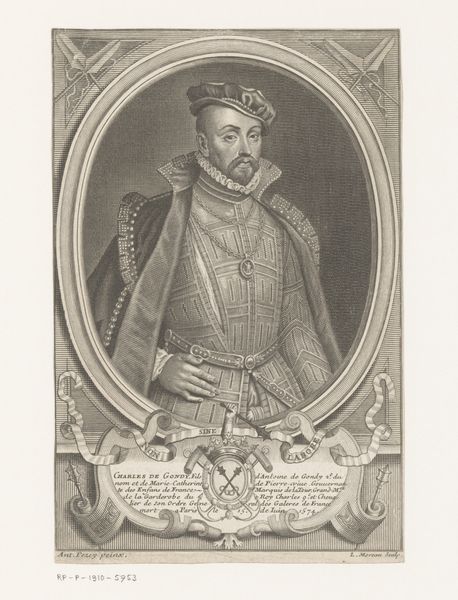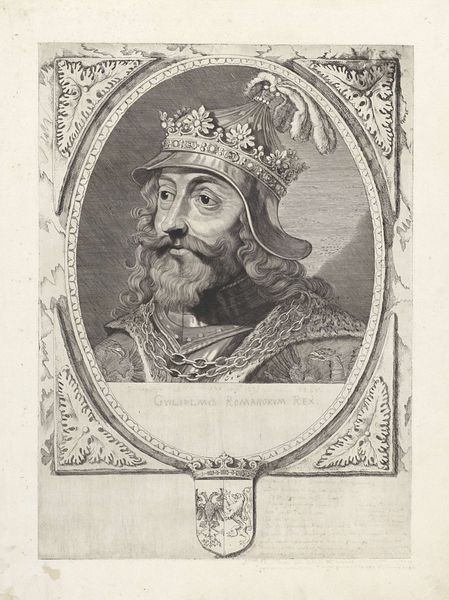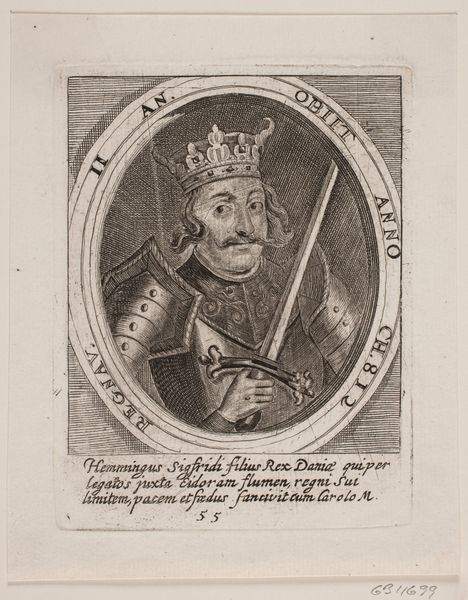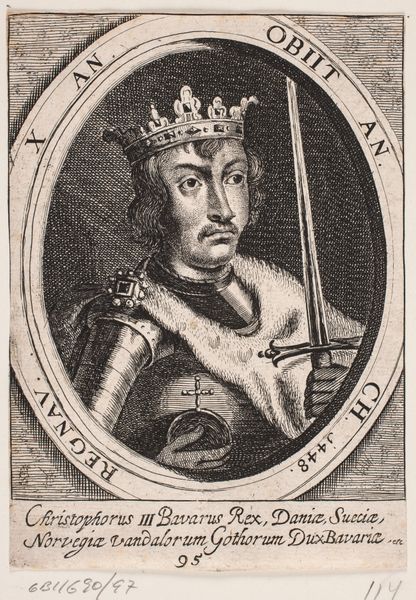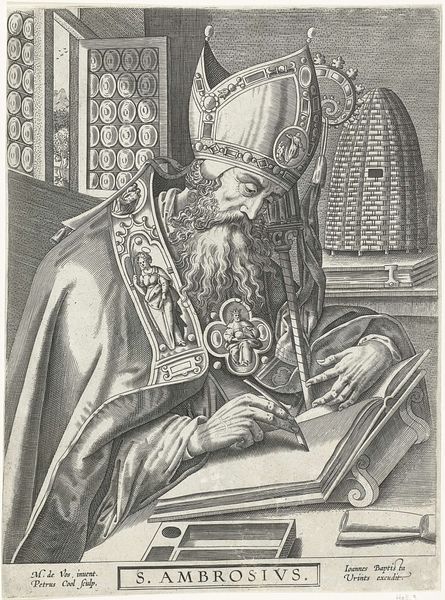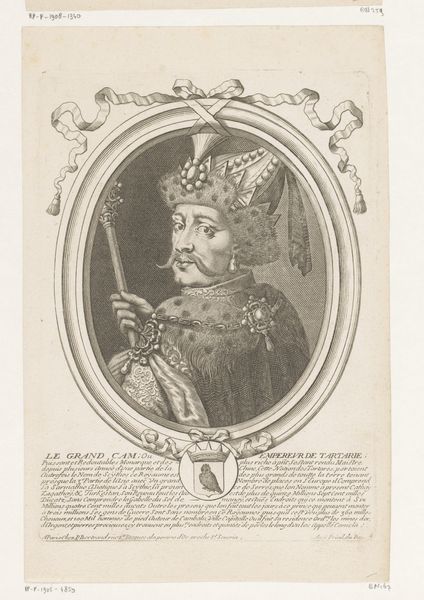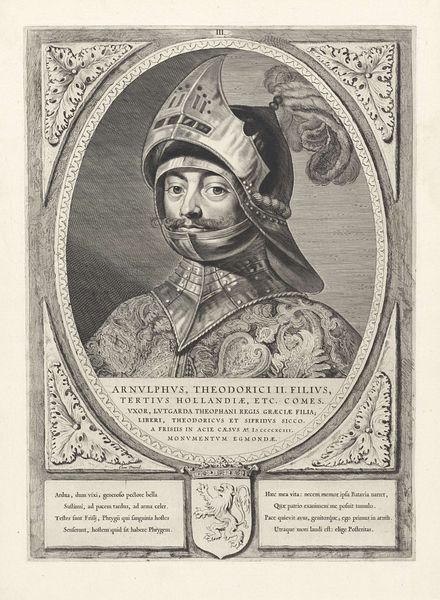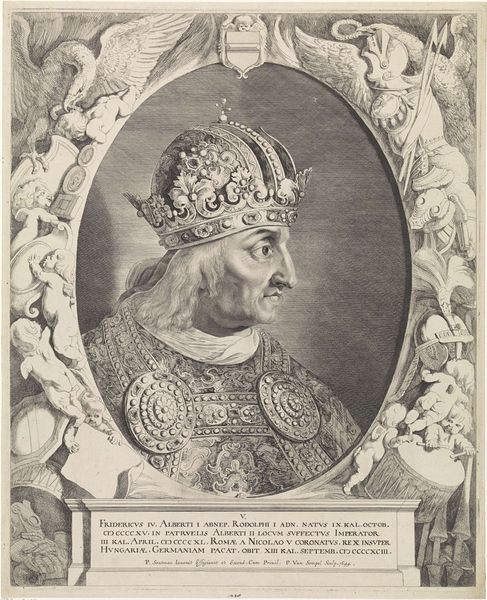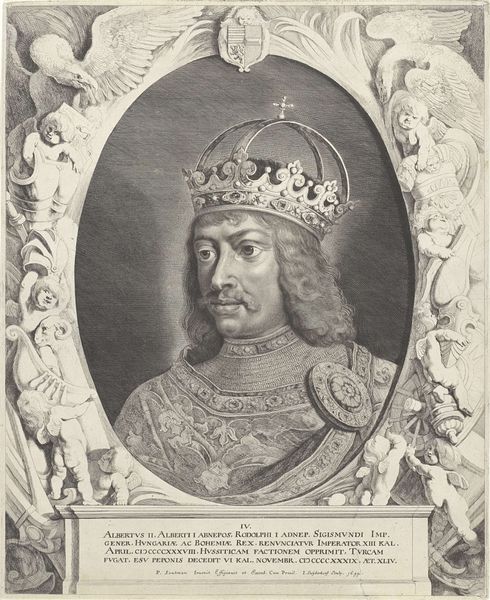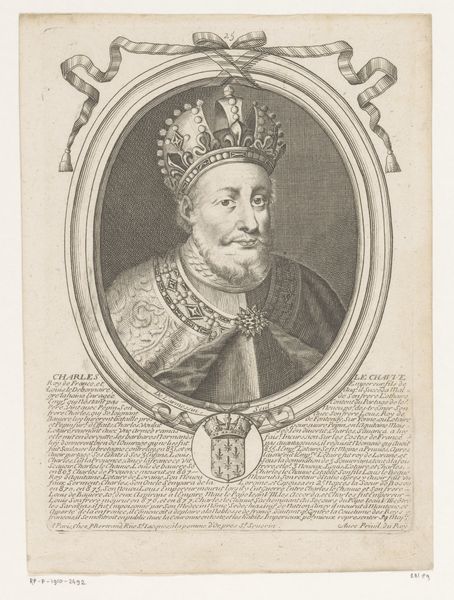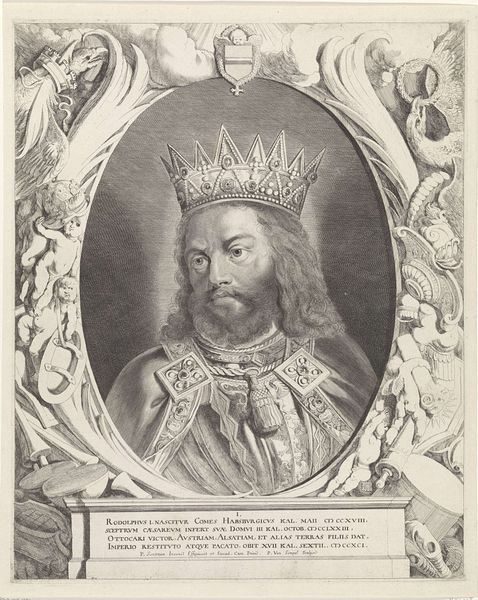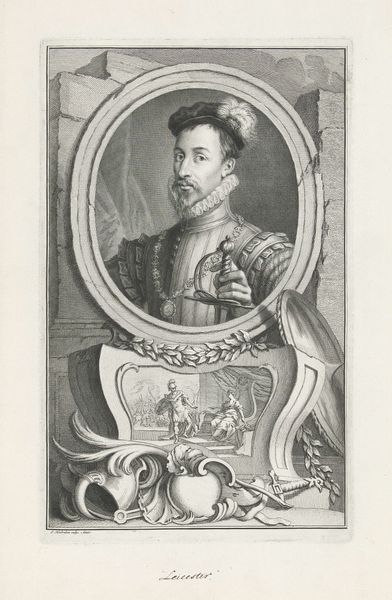
engraving
#
portrait
#
baroque
#
engraving
Dimensions: height 403 mm, width 270 mm
Copyright: Rijks Museum: Open Domain
Curator: Welcome. We are looking at Jonas Suyderhoef's "Portret van Sigismund III, koning van Polen en Zweden", created sometime between 1644 and 1650. It is an engraving. Editor: The precision! That lace collar is practically photographic. What strikes me most is the air of controlled power; it has that very stiff, theatrical presentation one sees with monarchs. Curator: Precisely. Let’s deconstruct. Consider how the image is structured. The central oval creates a frame within a frame, which then directs the viewer's gaze towards the subject. The subject is carefully positioned. Look how the lines converge— Editor: The lines pull inward towards his face... but that oval, wreathed in all those symbols, encloses the King almost possessively. Those festoons—are those supposed to be emblems of royalty? Curator: They seem celebratory, rather than merely symbolic of royal authority. The fruits and flowers entwined suggest a prosperous reign, maybe an idealised vision. But there’s also this very calculated... almost staged quality, that reflects a desire to project a certain kind of kingly image. Editor: And that is the fascinating paradox isn't it? The face itself—rather ordinary! Lacking any distinct or individual beauty; the man had to be presented to the masses by leveraging known emblems, and established iconographic tropes to inspire that loyalty. Do you get a sense of distance? Curator: Absolutely, distance but also aspiration. Look at the crown: It's almost hyper-real, sparkling with details carefully rendered to convey power and authority, regardless of any real glitz or glitter from the materials involved. The medium of engraving lends itself beautifully to the sharp contrasts and meticulous rendering of texture we see in his garment. Editor: The print translates an immediate cultural image for the wider populace, rendering the sitter into a symbol. In this piece we grasp the intent, of creating the symbolic monarch and then cementing that image for an empire, for that time, through iconographic tropes. Curator: Indeed, looking beyond the representative likeness we can identify and appreciate the enduring mechanics through which authority manifests—and how that form supersedes simple realism. Editor: It’s a fantastic demonstration of an era. Even just these two minutes we had with this image have opened up new avenues of inquiry.
Comments
No comments
Be the first to comment and join the conversation on the ultimate creative platform.
